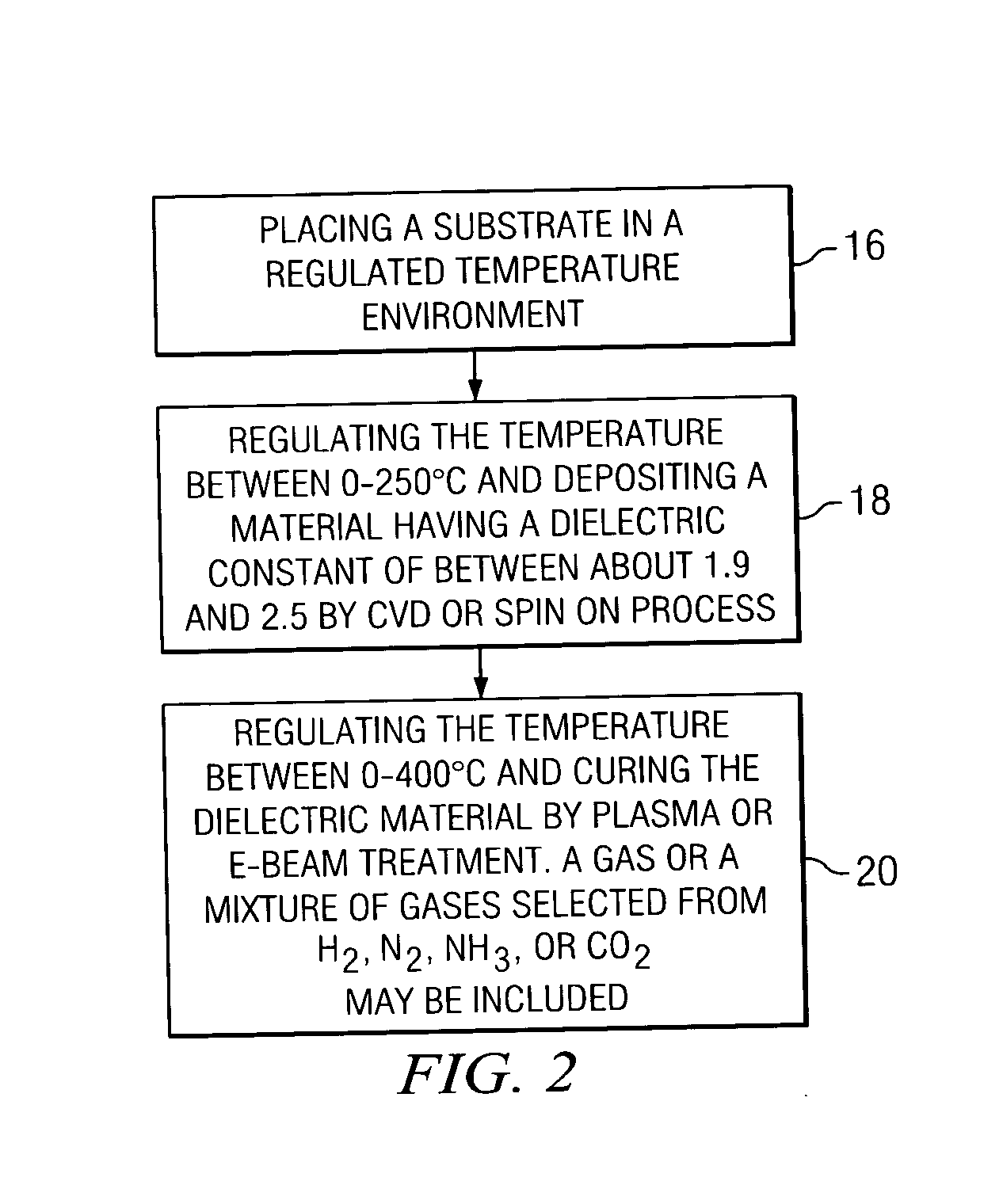Method for ultra low-K dielectric deposition
- Summary
- Abstract
- Description
- Claims
- Application Information
AI Technical Summary
Benefits of technology
Problems solved by technology
Method used
Image
Examples
Embodiment Construction
[0009] Referring now to FIG. 1A, there is shown a typical substrate 10 used in the manufacture of semiconductor devices. According to the present invention, the substrate is placed in a controlled environment where the temperature can be maintained at between about 0° C. and about 250° C. An ultra low-K dielectric material 12 is then deposited on the top surface 14 of the substrate by a CVD (chemical vapor deposition) process or a spin-on process at these low temperatures and as shown in FIGS. 1B and 1C, respectively. The term “ultra low-K” is used herein to mean a dielectric constant of between 1.9 and 2.5. Suitable examples of ultra low-K materials may include the SiLK™ manufactured by the Dow Chemical Company of Midland, Michigan, or an “organosilcate” material such as ORION™ manufactured by the Trikon company of Newport in the United Kingdom, porous MSQ films and various florocarbonated silicon films. For a material such as ORION™ a precursor such as methysilane (SiH3CH3) and hy...
PUM
 Login to View More
Login to View More Abstract
Description
Claims
Application Information
 Login to View More
Login to View More - R&D
- Intellectual Property
- Life Sciences
- Materials
- Tech Scout
- Unparalleled Data Quality
- Higher Quality Content
- 60% Fewer Hallucinations
Browse by: Latest US Patents, China's latest patents, Technical Efficacy Thesaurus, Application Domain, Technology Topic, Popular Technical Reports.
© 2025 PatSnap. All rights reserved.Legal|Privacy policy|Modern Slavery Act Transparency Statement|Sitemap|About US| Contact US: help@patsnap.com



